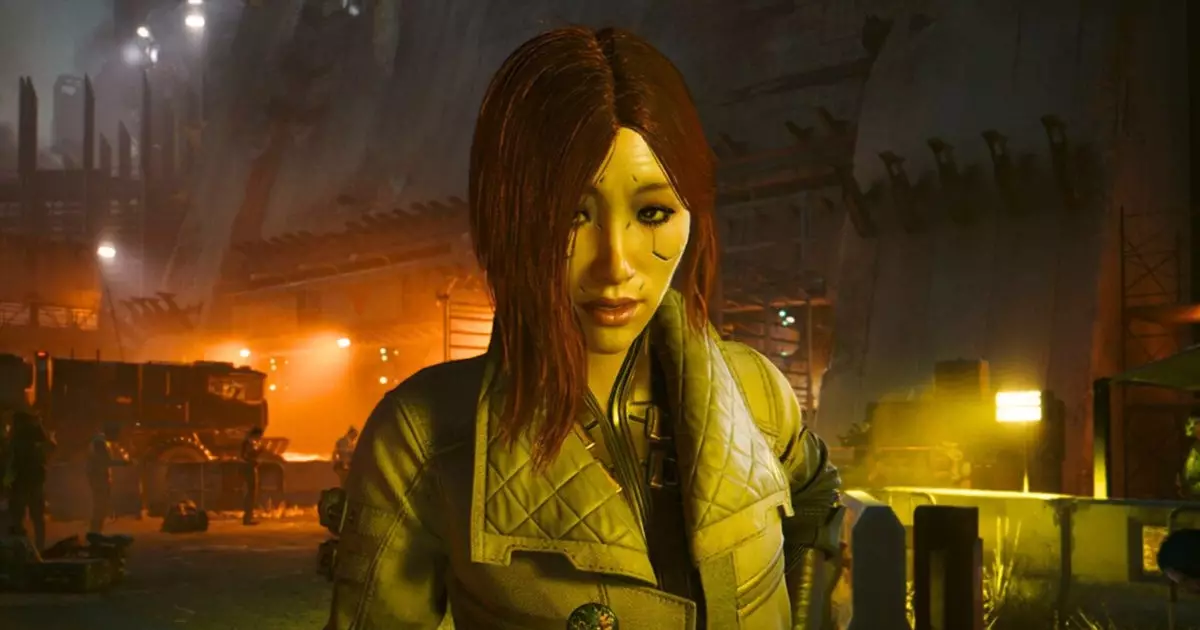As fans of expansive gaming worlds know, crafting an engaging sequel is no simple undertaking. CD Projekt Red’s ambitious sequel to Cyberpunk 2077 stands at a crossroads of expectation and mystery. With the focus currently on the highly anticipated Witcher 4, much remains shrouded in secrecy concerning the next chapter of the Cyberpunk saga. However, exciting implications of narrative depth and world expansion have surfaced, particularly through the insights shared by Cyberpunk creator Mike Pondsmith.
Pondsmith’s involvement, while not as hands-on as it may have been, still offers a tantalizing glimpse into the sequel’s world-building. His experiences during the development process allow us to appreciate the intricacies of the game’s storytelling. Anna Megill, who comes with a rich background from legendary titles like Control and Fable, will be leading the writing, which sets a solid foundation for emotionally resonant and thought-provoking content. CD Projekt Red’s goal to tackle substantial and complex themes can lead to a dramatic expansion of the Cyberpunk narrative that resonates with players, igniting discussions around technology and society.
A New Landscape to Explore
One of the more intriguing revelations from Pondsmith pertains to the game’s map. Instead of merely tweaking the original Night City, it seems we will be treated to another urban environment, described by Pondsmith as a city reminiscent of a dystopian Chicago. This detail is significant for a couple of reasons. First, it acknowledges the players’ thirst for new environments and experiences. After all, players often find themselves yearning for diversity and exploration in vast, open-world RPGs.
Moreover, this new setting allows CD Projekt Red to incorporate varied cultural and architectural influences, adding fresh layers to the Cyberpunk lore. It’s an excellent opportunity for the developers to capitalize on what made the first game so immersive: its atmosphere. In many ways, you could see this creative strategy as a response to the critiques leveled against games that reuse maps without significant alterations. Much like The Legend of Zelda: Tears of the Kingdom, which cleverly adapted its prior map, the new Cyberpunk game could transform familiar locations into fresh epicenters of conflict and narrative threads.
Player Experience and Immersion
This method of invoking nostalgia while introducing players to new experiences captures the essence of what makes video games worthwhile: the ability to immerse yourself fully in a world that feels both familiar and novel. As Pondsmith mentioned, he felt that the new environmental aesthetics didn’t mimic the iconic vision of Blade Runner but instead took a unique turn. The Chicago-like setting suggests gritty urban challenges intricately woven into the lives of characters, promising complex narratives connected to the societal fabrics of this new city.
Furthermore, the feedback loop between Pondsmith and the development teams allows for an iterative creative process. It opens pathways for innovation while staying true to the core essence of the Cyberpunk universe. The iterative dynamics of creative development allow the narrative to evolve based on real-time input, enhancing authenticity and relatability. As gamers become more invested in their characters and worlds, this back-and-forth could lead to a richer player experience and more complex emotional engagement.
Longing for More
Despite being markedly critical of some aspects of Cyberpunk 2077, as many players were, the prospect of returning to this universe is undeniably captivating. Pondsmith’s hints of further lore and evolved gameplay dynamics stoke the fires of curiosity. The creative decisions toward exploring new environments alongside revisiting Night City suggest that the sequel is gearing up to exceed expectations, pushing boundaries of what a Cyberpunk experience can entail.
While it would be unrealistic to expect immediate details about the game’s overarching plot, the conversations taking place behind the scenes signal a level of thoughtfulness and ambition that players have come to expect from CD Projekt Red. As the community waits for more information, one thing seems certain: Cyberpunk’s future is not just another entry in a long line of sequels—it’s an opportunity for reimagining a dystopian dream. Embracing this potential could result in a game that not only fulfills its predecessors’ promises but also carves out a new legacy entirely.

